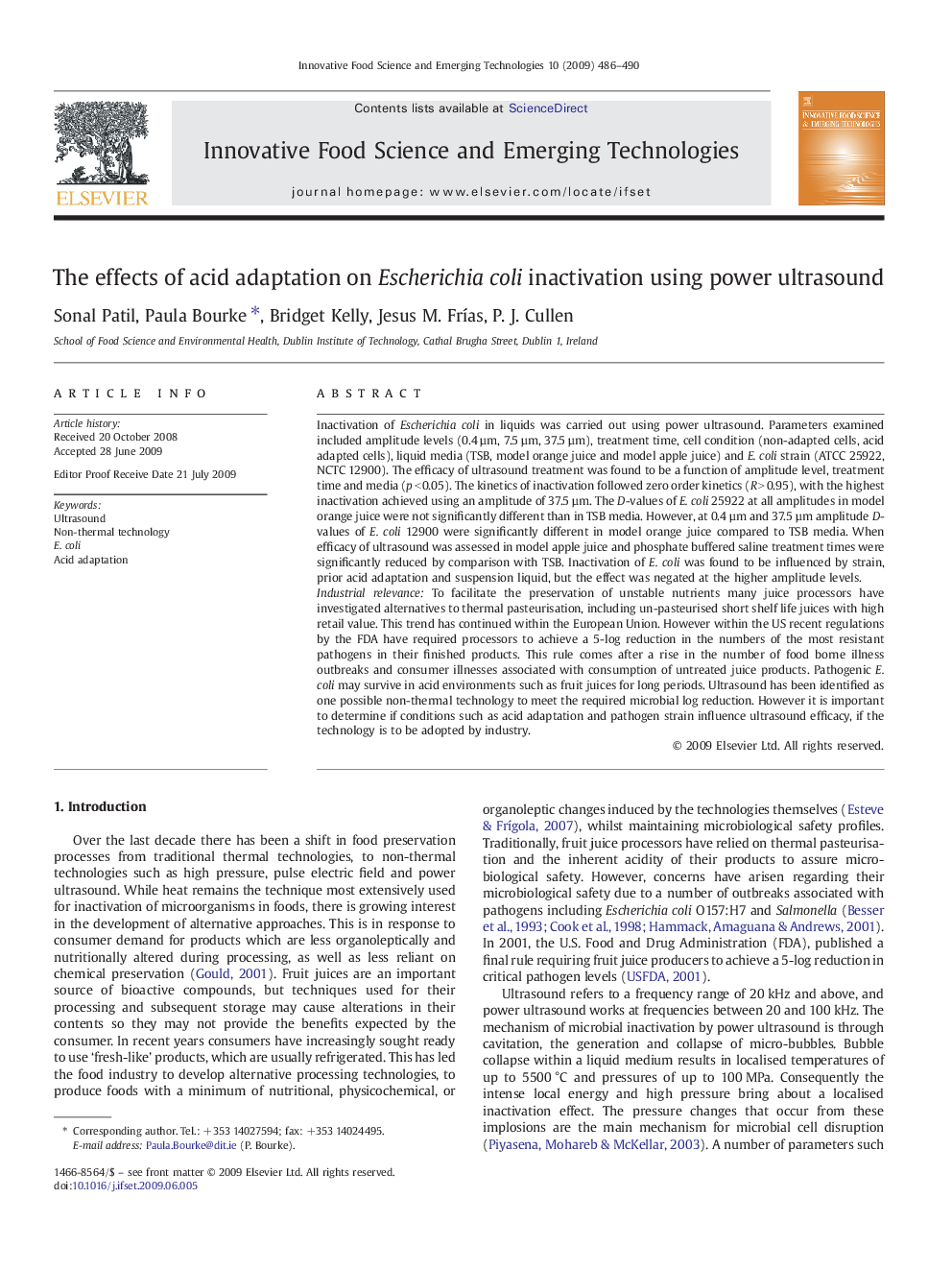| کد مقاله | کد نشریه | سال انتشار | مقاله انگلیسی | نسخه تمام متن |
|---|---|---|---|---|
| 2087059 | 1545554 | 2009 | 5 صفحه PDF | دانلود رایگان |

Inactivation of Escherichia coli in liquids was carried out using power ultrasound. Parameters examined included amplitude levels (0.4 µm, 7.5 µm, 37.5 µm), treatment time, cell condition (non-adapted cells, acid adapted cells), liquid media (TSB, model orange juice and model apple juice) and E. coli strain (ATCC 25922, NCTC 12900). The efficacy of ultrasound treatment was found to be a function of amplitude level, treatment time and media (p < 0.05). The kinetics of inactivation followed zero order kinetics (R > 0.95), with the highest inactivation achieved using an amplitude of 37.5 µm. The D-values of E. coli 25922 at all amplitudes in model orange juice were not significantly different than in TSB media. However, at 0.4 µm and 37.5 µm amplitude D-values of E. coli 12900 were significantly different in model orange juice compared to TSB media. When efficacy of ultrasound was assessed in model apple juice and phosphate buffered saline treatment times were significantly reduced by comparison with TSB. Inactivation of E. coli was found to be influenced by strain, prior acid adaptation and suspension liquid, but the effect was negated at the higher amplitude levels.Industrial relevanceTo facilitate the preservation of unstable nutrients many juice processors have investigated alternatives to thermal pasteurisation, including un-pasteurised short shelf life juices with high retail value. This trend has continued within the European Union. However within the US recent regulations by the FDA have required processors to achieve a 5-log reduction in the numbers of the most resistant pathogens in their finished products. This rule comes after a rise in the number of food borne illness outbreaks and consumer illnesses associated with consumption of untreated juice products. Pathogenic E. coli may survive in acid environments such as fruit juices for long periods. Ultrasound has been identified as one possible non-thermal technology to meet the required microbial log reduction. However it is important to determine if conditions such as acid adaptation and pathogen strain influence ultrasound efficacy, if the technology is to be adopted by industry.
Journal: Innovative Food Science & Emerging Technologies - Volume 10, Issue 4, October 2009, Pages 486–490